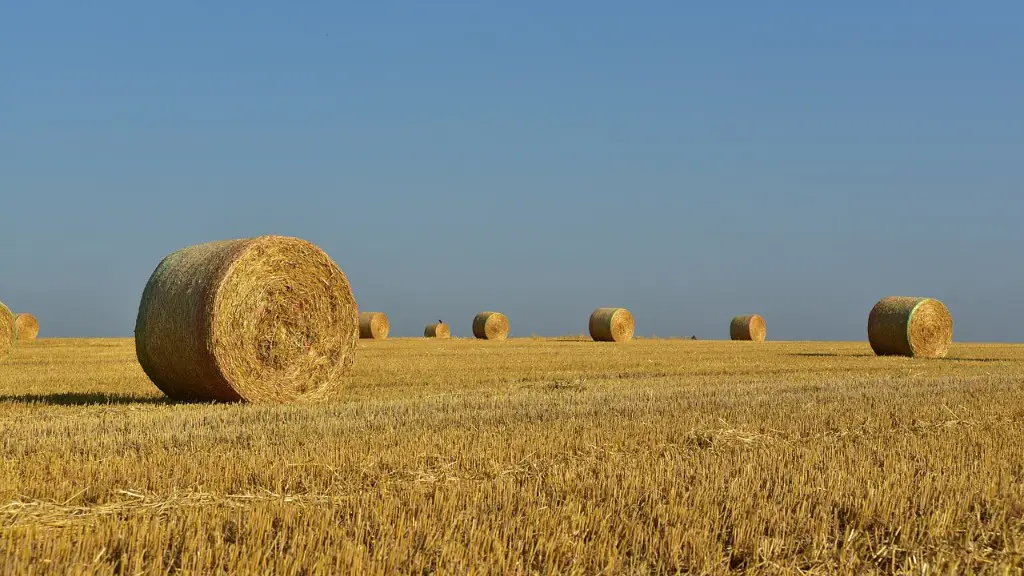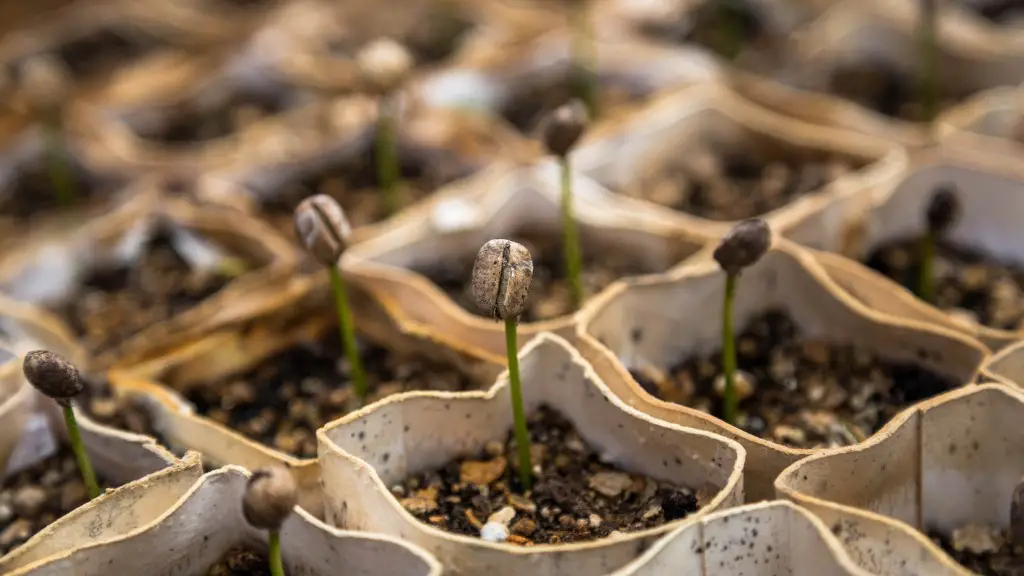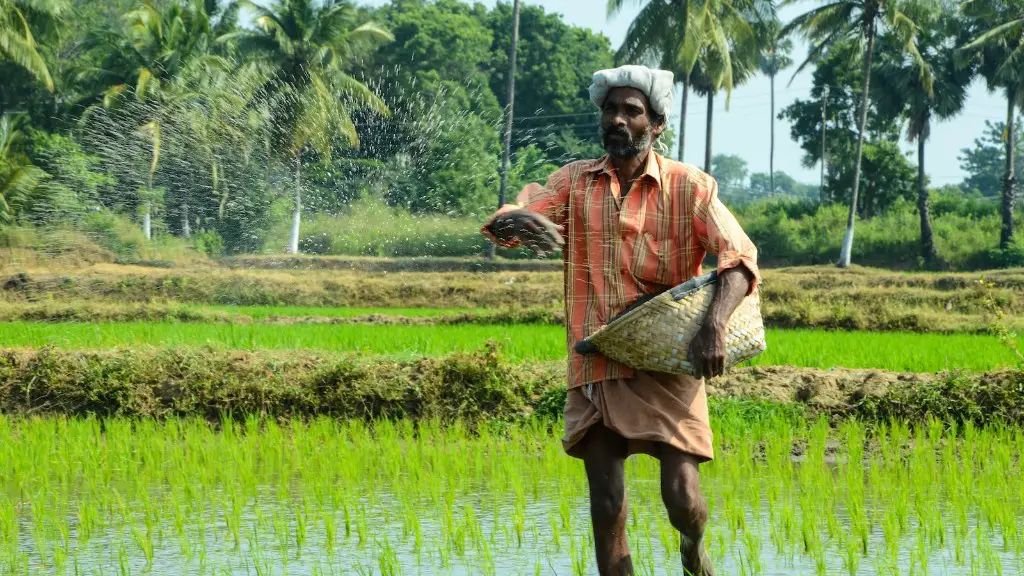Vertical farming is an innovative, high-tech solution for urban agriculture that’s gaining popularity worldwide. It involves the cultivation of crops in vertically stacked layers, usually on specialized structures, such as warehouses and skyscrapers. In vertical farming, crops are grown on shelves or in suspended systems, so there’s no need for large fields, herbs, or soil. As well as reducing land usage, vertical farming also makes more efficient use of resources, such as water, with some studies showing a potential 80 percent reduction in water usage compared to traditional field farming.
The potential of vertical farming is enormous. For one thing, it has the potential to dramatically boost urban population’s access to fresh produce. Vertical farms can additionally operate year-round, meaning harvests are far more predictable and plentiful. This could result in an increase in local economic growth as residents no longer have to purchase as much produce from out of town. Finally, since vertical farming is highly automated, it could drastically reduce labour costs, making produce more affordable.
However, it’s still unclear whether vertical farming is the future of agricultural production. To begin with, the high cost of technology involved in setting up the farms make it impractical for some agricultural producers. Further, natural sunlight doesn’t always reach the lower levels of the stacked crops, which could lead to slower growth or stunted yields. Additionally, since vertical farming requires indoor conditions, it may pose a health hazard if proper ventilation isn’t factored into the structure. Finally, although vertical farming is beneficial in terms of water efficiency, some farmers may argue that it still uses too much energy to be economically viable.
Innovative Technology
Although many people question whether vertical farming is a realistic solution for the future of agriculture, the technology involved is certainly innovative. For example, farming operations employ the use of artificial lighting, hydroponics, sensor technology, and other advanced techniques to facilitate rapid crop growth. With these tools, farmers are able to maximize their yields, reduce water usage and energy costs, and maximize the quality of their produce.
Additionally, companies researching vertical farming have made huge strides in the development of automated systems for managing crops. By leveraging AI and robotics, these systems can automate everything from planting to harvesting, resulting in less manual labour, higher yields, and lower costs. Finally, some companies are even developing vertical farming systems that use big data to handle everything from monitoring soil moisture to forecasting climate changes.
Environmental Benefits
One of the major benefits of vertical farming is its potential to help reduce the environmental impact of agriculture. For example, since vertical farms are smaller, they can be more easily integrated into urban settings, leading to a reduction in carbon emissions from transportation.
Furthermore, compared to traditional field farming, vertical farming closes the nutrient cycle and can help restore biodiversity. Furthermore, vertical farms are more efficient with their water use and can reduce pollution thanks to its ability to use rainwater and waste water.
Nutritional Benefits
Vertical farming also has significant potential health benefits, as it allows farmers to produce more nutrient-dense produce. For example, special LED lighting used in many vertical farms has been found to enhance the nutritional content of leafy greens. This means that by eating food from vertical farms, people can get more vitamins and minerals from their food.
Furthermore, thanks to the precision and control of vertical farming, it should also be possible for farmers to ensure their crops all meet the same high standard for nutritional value. This could result in healthier and happier populations, as people will have more access to better quality food.
Economic Prospects
The economic potential of vertical farming is also exciting. For starters, as more people move into urban areas, the demand for fresh, locally-produced food will increase. This means that vertical farms may be able to capitalize on this newfound demand and become profitable.
Furthermore, as businesses become increasingly interested in creating a positive environmental impact, vertical farming could become one of the most accessible and economical ways for businesses to do so. After all, since it requires less land usage, less energy, and lower water costs, vertical farming should prove to be an attractive and cost-effective option for many companies.
Political Implications
Finally, many governments across the world are also turning to vertical farming as a way to reduce food shortages and improve access to affordable produce. For example, several governments are exploring the potential to create vertical farms in their cities to create more food security. In addition, many governments are using vertical farming to stimulate the local economy and create more jobs in urban areas.
Although the exact political implications of vertical farming are still uncertain, it is widely accepted that it could play a significant role in both improving access to affordable produce and supporting localized economic growth.
Challenges with Vertical Farming
Despite its potential benefits, vertical farming still faces many challenges. For example, the technology used in vertical farming is still expensive, making it difficult for many farmers to access. Furthermore, it requires a huge amount of energy, making it difficult for some countries to be able to incorporate it into their agricultural systems.
Additionally, because vertical farming is relatively new, there is still very little regulation surrounding it. This means that companies in the vertical farming industry have little oversight over their operations, leading to little to no control over the quality of produce being produced.
Biodiversity Limitations
Finally, vertical farming can also have a negative impact on biodiversity. For instance, since vertical farms are contained indoors, pollinators such as bees and butterflies cannot access them and so the existing diversity of plants may be lost. In addition, the lack of natural pests and predators can lead to an increase in pest populations in non-farmed crops.
Overall, while vertical farming may be seen as a potential solution to some of the world’s problems, it is important to be aware of its limitations. In order for it to be truly effective and beneficial, it must be implemented in a way that is respectful of all aspects of nature, includingbiodiversity, environmental impact and nutrient density.


